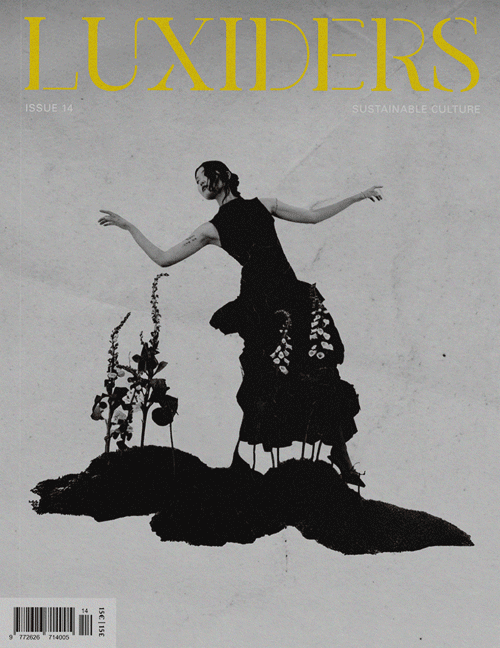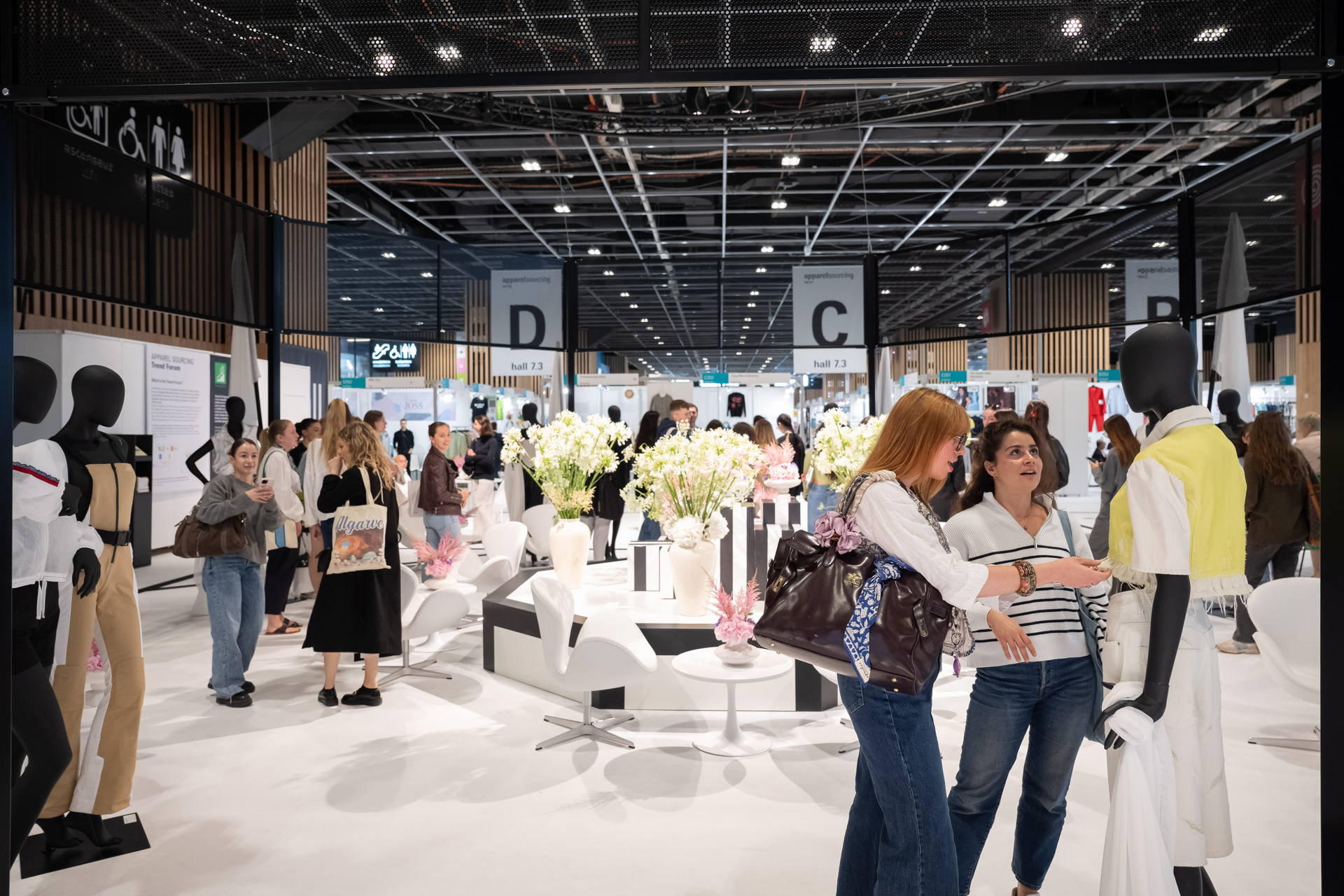
The Future Of Textile Fairs: Interview With Mr. Frédéric Bougeard, President of Messe Frankfurt France
Fairs are a reflection of markets. Unfortunately, the textile market seems to be in a sluggish period. How is Texworld responding to market dynamics and buyer demands? Adapting to change. One of the best persons that have an idea of what textile fairs will look like in the future and how the textile outsourcing market is developing is Mr. Frédéric Bougeard, President of Messe Frankfurt France. We interviewed him at Texworld Apparelsourcing Paris, hold last week.
How is your sensation about this edition of Texworld?
It was calm in the beginning, but now it’s becoming a little bit more dynamic. We see clearly now what’s happening in the world. I’m talking about the barriers. During last year, we had many fashion brands which were impacted by hard difficulties or bankrupt. The numbers of actors of this market are shrinking. But it doesn’t mean that the volume of business has been impacted. It is just that more than ever, there are less buyers. That is why each buyer becomes now super important. The formats of Texworld and ApparelSourcing fits this market evolution perfectly. Our show offers pragmatic and realistic solutions. For several editions now, I’ve been developing more services for buyers. They can come with their entire team, use the buyer’s room, have briefings before visiting the show, conduct business, relax, debrief, and return.
“We offer more services and care about each buyer. This doesn’t mean we didn’t care before, but now we recognize that each buyer has higher potential. Exhibitors have noticed that one buyer can make their day because now, behind each buyer, there are multiple brands. The show must reflect the market.”
A Pragmatic Approach to Buyer Needs Amid Market Shifts
The market is evolving. We need to understand buyers’ needs. They want solutions and possibilities. For instance, we are one of the only shows offering both textiles and apparel. Buyers can complement their collections in both sections, which is increasingly important. The intimate selection in apparel will be located in the heart of the silky and embroidery section on textiles in the next edition. This makes sense from a buyer’s perspective, allowing them to see textiles, materials, and options for finished products in one place. We are ready to experiment and have already implemented new services. Our goal is to make the show more efficient.
Is that the plan for developing the Concept Store Product’s place?
Exactly. We need to foster synergies to make the show more efficient for buyers. Always thinking from the buyer’s perspective, we have made changes like placing related sections closer together. This saves time and allows for better comparisons, creating what I call “business solutions.” For example, some buyers might purchase textiles and then move to the apparel section to ask if a specific model can be made with the textiles they just bought. The show must evolve to meet buyers’ needs, which are the key to the market. Historically, shows were organized from the organizer’s or exhibitor’s perspective, often ignoring buyers’ needs. Without buyers, there are no exhibitors or shows.
Exhibitors often feel overwhelmed by sustainability demands, but we advise them to start with one initiative and build from there. Many buyers appreciate these efforts. Within four years, sustainability will be mandatory.
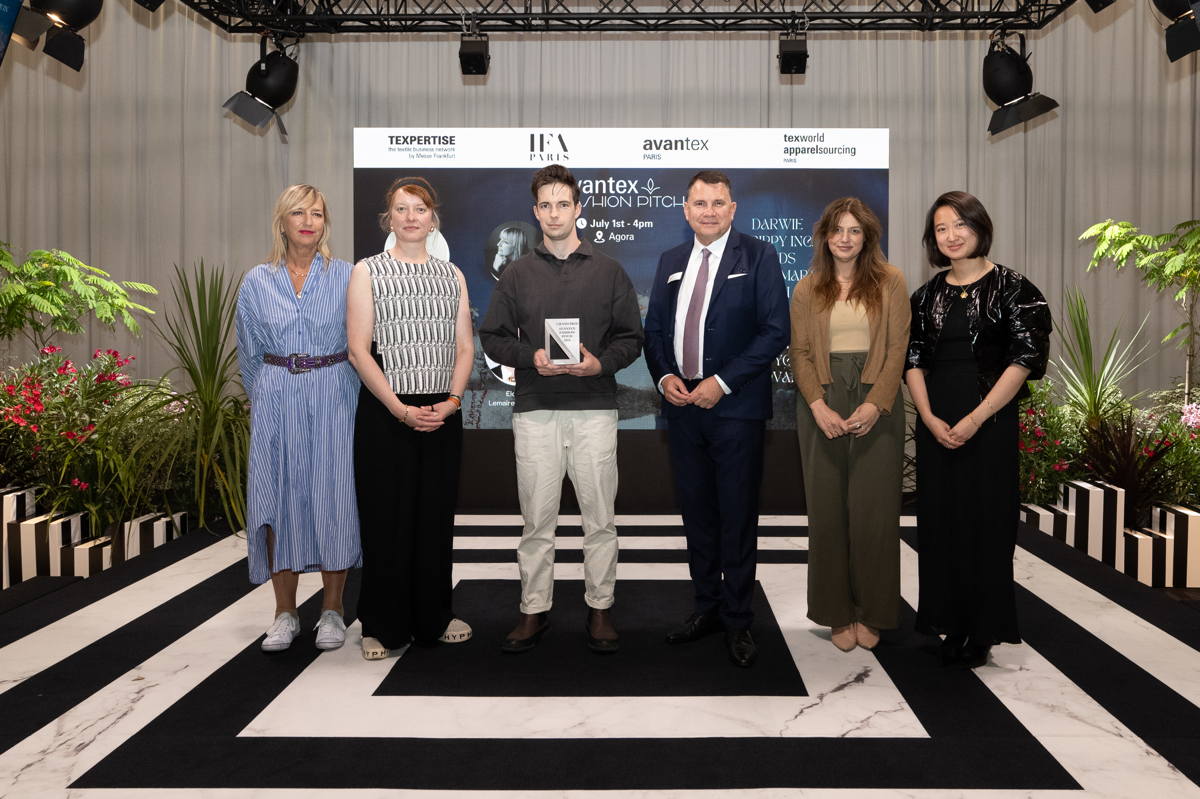
SUSTAINABILITY DEMANDS
I’ve noticed a development in the sustainable offer here, including the Econogy Tool. Can you tell me more about it?
Yes. This is the first time we introduced the Econogy Tours. They are very interesting. It’s itinerary. I’m not here to lecture my exhibitors. I’m just here to inform my exhibitors now this ecology part is a key point. And I need to get them to be prepared. This is why we offer to all our exhibitors a free evaluation. It’s completely free for the exhibitors. They just have to fill some questionnaires and of course give some input and information. And they will receive an information and evaluation not from our team, from an external service called CSI, who are specialists. Those people are able to say, yes, you match this criteria and you could be on our selection. Or no, you need to improve. So that’s the way I want to help.
It is not only abut water consume or ecology, but also about social responsibility. We want to reward all positive initiatives coming from the industry. It’s a very good time to make this education, because in 2030 we have to be ready. So as I said to the exhibitors, don’t wait until the last moment. We are here to help you. We are here to promote each of your initiatives. And you need to start now.
Sometimes many exhibitors say: “Oh, it’s a wall, we’ll never make it!”. I say, no, you could start by one initiative, and plus one initiative, and you will see that many buyers will be very happy with that. Within four years, it will be compulsory. So don’t wait. What is good with this industry, especially with the overseas exhibitors, is how fast they are. Sometimes in Europe, we are thinking with our European mind, we say, oh, it will take decades. And it’s true. Because we have fear of the change, of the evolution, we always think on the complicated way. Those people, Indian, Chinese, from one day to another, they can really say, okay, let’s do it.
Do you think the industry will be ready for the new EU laws in 2026?
Maybe not the entire industry, but most of it will be ready. They have the biggest motivation: the sales. They know that if they want to continue selling in Europe, they will have to do it. So we might be surprised about how fast they are in terms of reactivity. The overseas exhibitors are particularly fast and reactive.
“Buyers are the decision makers. It’s not a revolution. It’s an evolution. The show has to be shaped on the buyer’s point of view, and not anymore on the organizer’s. For many years, many shows were organized on the organizer’s perspective or exhibitor’s perspective. They forgot the buyers. Changing days, calendars, places. It’s nice, but what about the buyers? Are they happy? What’s their benefit? Without buyers, you don’t have exhibitors, you don’t have a show.”
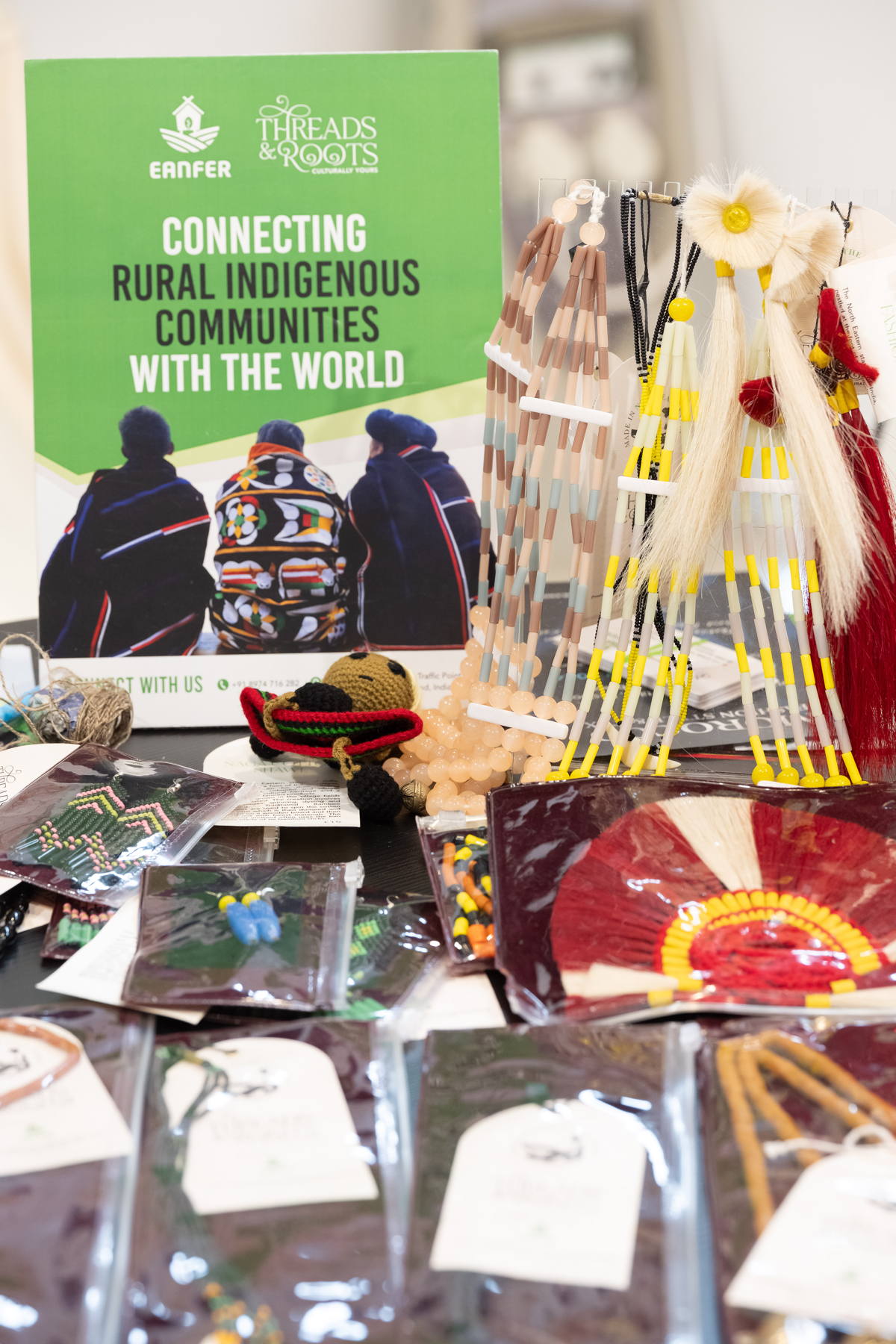
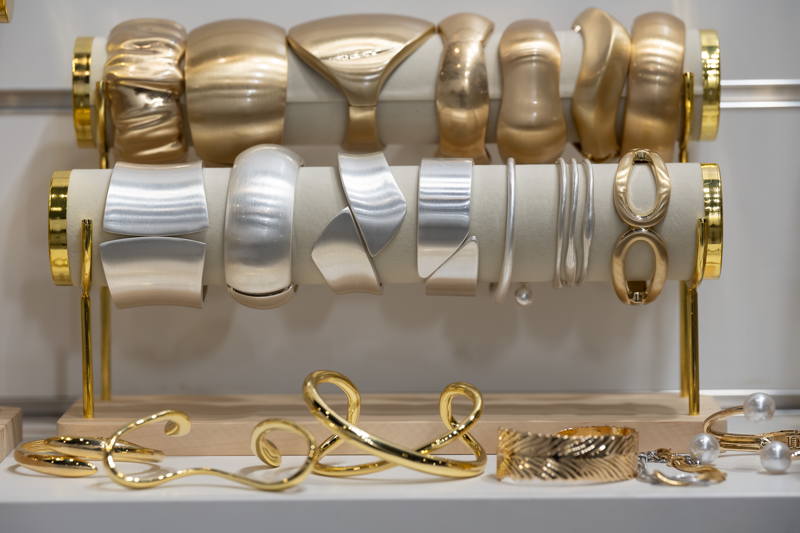
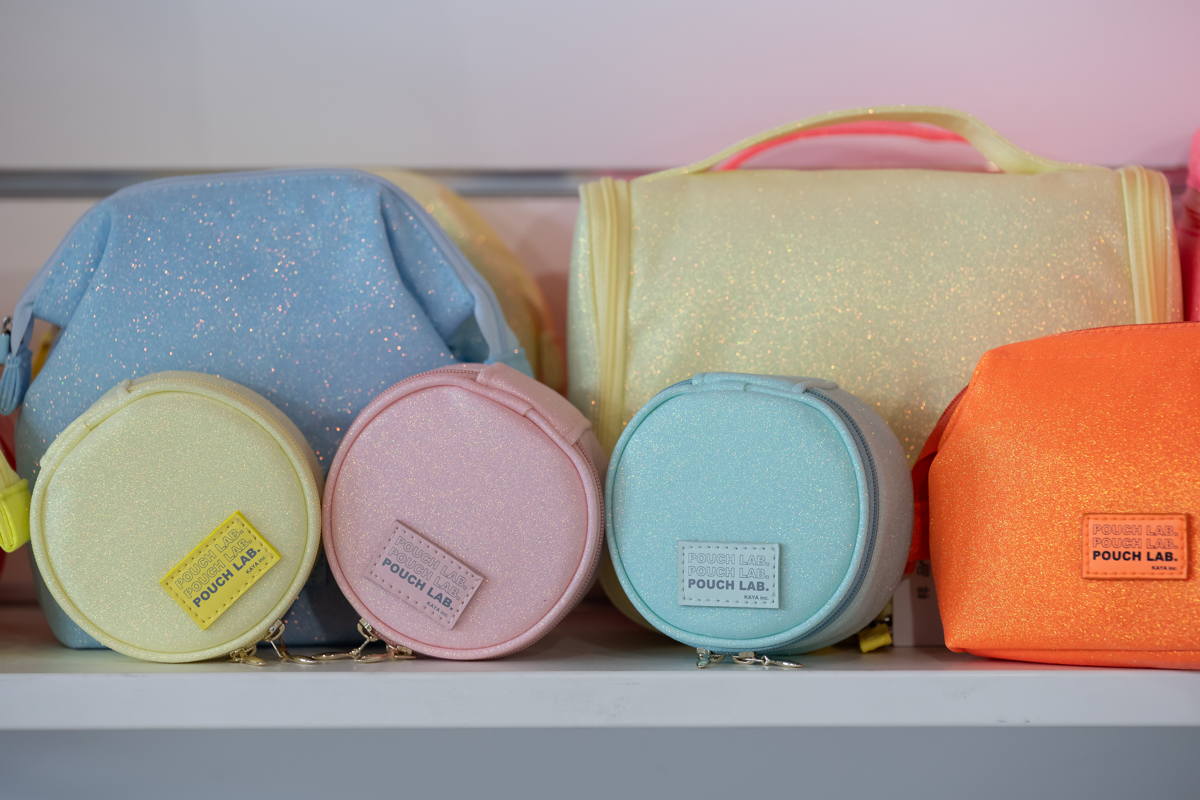
NEAR SOURCING IS A REALITY
Other trend that I see is the near sourcing. As the international fair you represent, how do you see it, and how are you going to support near sourcing?
From the buyer’s perspective, near sourcing has become important. It was quite difficult for us to contact those companies, because when we talk about near sourcing, we’re talking about a few companies. And few countries. Some in Serbia, some in Romania, some in Turkey. We partnered with FourSource to develop near sourcing solutions quickly and effectively. Instead of building our own network, we collaborated with an existing partner, which allowed us to respond swiftly to buyers’ needs. This concept of “co-petition” helps us serve buyers better.
What about digital fashion? How do you see its role?
Digital and physical aspects are complementary. In our industry, the tactile experience of textiles is crucial. While digital tools can make the selection process more efficient, they won’t replace the need to touch and see real colors. AI can help accelerate processes, but digital will not substitute physical entirely. If I speak with the buyers, they say: “No, no, it’s not enough. Maybe some say, we do a pre-selection, but I will wait for the physical samples to take a decision.”
What I believe is that show organizers like us need now to insert more digital tools to save, to help the buyers to really accelerate, make the show more easy to visit, more easy to select, and for that, I will always be positive on any potential collaborations. So, let’s say, let’s not put this digital and physical like a sort of fight.
“I had two options. I could develop a near sourcing tool through my own team, my own network. It would take probably years, or work with an existing partner. And I don’t think it’s competition. I like the concept of co-petition. Instead of fighting, it’s better to gather it. At the end of the day, for the buyers, it’s the same.”
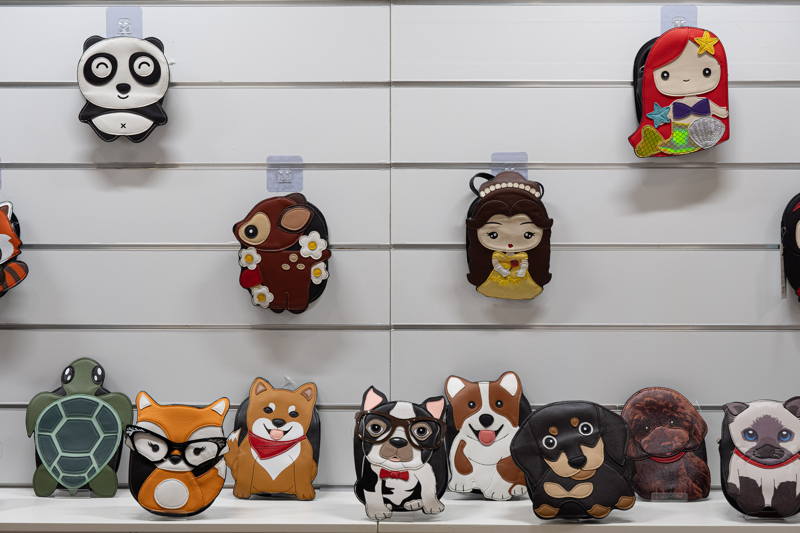
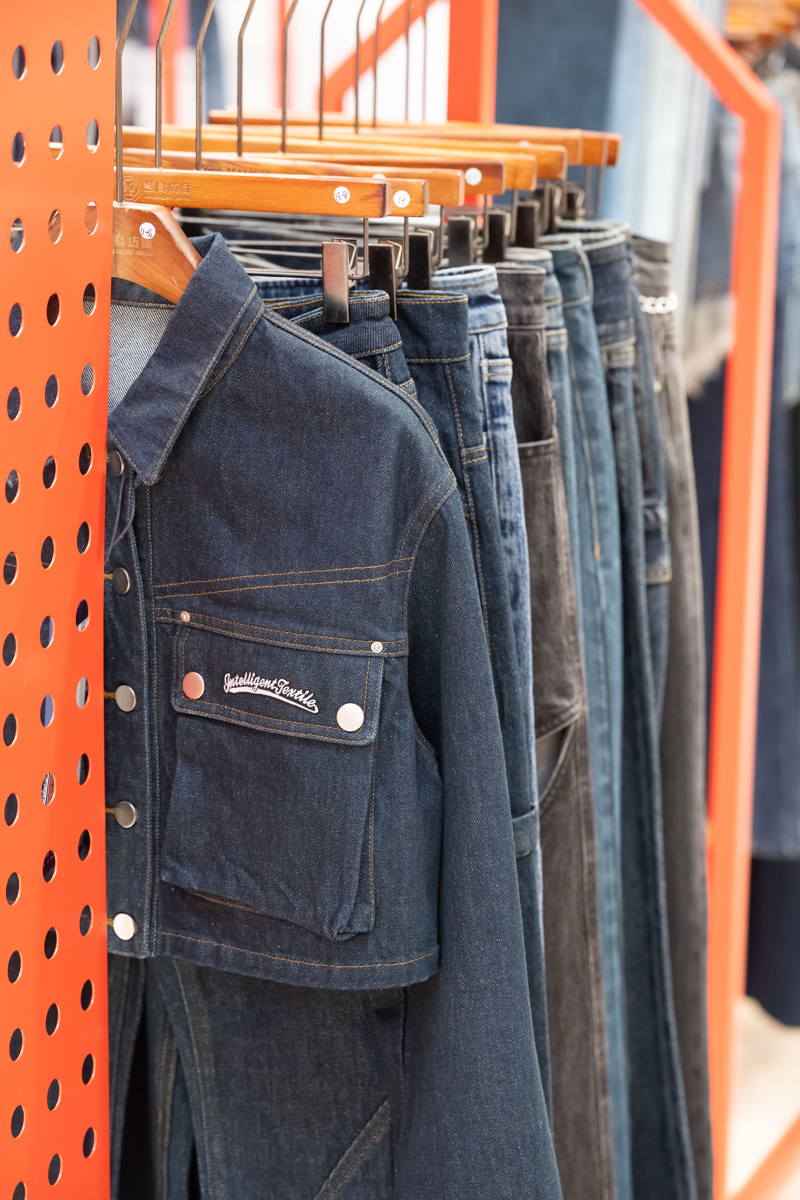
SYNERGY IS THE KEY
What other trends do you see as successful for the future?
“Mixed Collections”—combining textiles and garments—are increasingly popular. Because it’s easy, an immediate and interesting solution for buyers. I don’t need to manufacture all my collections. I want to develop more accessories. Why should I become an accessory manufacturer? It’s better to make a deal with a manufacturer, or maybe a brand, and so on. That is why, the apparel section has grown significantly, now representing nearly 40% of the show.
I see synergy between textiles and garments manufacturers. Before, those people, they were not talking together. They were beside, but not really talking. Now, they are really talking together, and I saw even collaborations between some of them. And if we dig on the thing, I saw, for example, a lot of development on active wear. It came from the sportswear. From the sportswear it moved to the casual wear. And from the casual wear, now they call it active wear. That permits us to say maybe we should enlarge our offer in the garments.
Also this year, I don’t know if you noticed this, we developed more jewelry. You have some jewelry manufacturers now who are exhibiting. Yes, because there are many brands developing jewelry. So, what I want is that they are next to show. When they source, they won’t visit the jewelry show because it’s just 5% of the collection. But meeting jewelry manufacturers option here will be very interesting. It is like canvas shoes.
Every year I’m doing a survey among the buyers. And we asked them, what are the product categories you would like to see in the show? The last three I mentioned were the top three very much. Let’s be pragmatic. One place for shopping. They come usually for the show one, two days maximum. They need to see a selection of the manufacturers in different categories that are tested. We will do that.
Have you considered addressing deadstock in future editions?
If buyers need it, we will consider it. It’s something we’re exploring with exhibitors. Deadstock is more prevalent in the middle to high segments, so we need to evaluate its relevance for our segment. We are not afraid to test new ideas and adjust based on feedback. Our approach is to observe, listen to buyers, and adapt. Flexibility and agility are key. We consult with buyers regularly to improve the show, ensuring it remains relevant and efficient.

